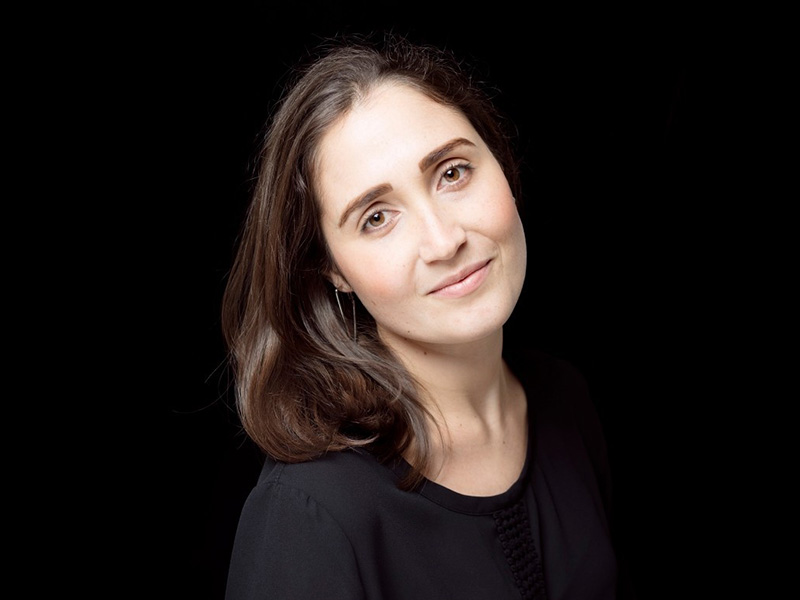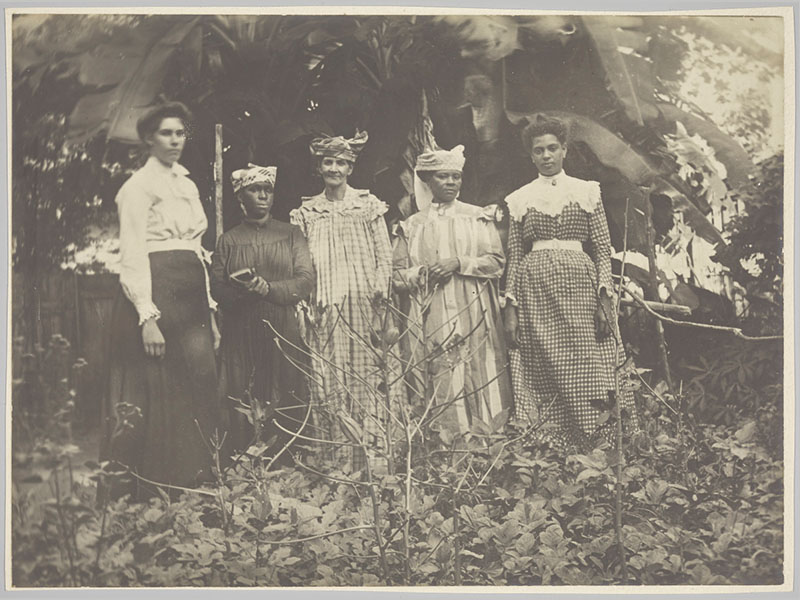From Barbados to Toronto: A journey in photography

Alumna Alexandra Gooding felt a great sense of pride in assisting with the curation of the AGO’s Fragments of Epic Memory exhibition.
Alexandra Gooding turned her teenage passion for photography into a career dream when she landed the curatorial assistant position at the Art Gallery of Ontario.
A 2020 master of film and photography preservation and collections management graduate, Gooding originally hails from Barbados and attended RU as an international student, completing her undergraduate degree in 2015 in photography studies.
In February 2020, after multiple friends and professional colleagues sent her a job posting proclaiming “this is the job for you!,” Gooding was hired as the curatorial assistant in the AGO’s new Department of Arts of Global Africa and the Diaspora, to work on the department's inaugural exhibition Fragments of Epic Memory (external link) , a visual exploration into the Caribbean and its diaspora, from the period following emancipation through today.
“Those objects represent a very specific point in time,” Gooding said. “That collection dates from 1840 to 1940, which is immediately post-emancipation, as 1838 is when people were supposedly ‘freed.’ But there were other exploitative labor systems that were put in place. So even though it's considered ‘post-emancipation,’ the type of society that those places were still living under was highly colonial.”

Unknown Photographer. Jamaican Women, c. 1900. Gelatin silver print, overall: 17.5 × 23.5 cm (6 7/8 × 9 1/4 in.) Art Gallery of Ontario. Montgomery Collection of Caribbean Photographs. Purchase, with funds from Dr. Liza & Dr. Frederick Murrell, Bruce Croxon & Debra Thier, Wes Hall & Kingsdale Advisors, Cindy & Shon Barnett, Donette Chin-Loy Chang, Kamala-Jean Gopie, Phil Lind & Ellen Roland, Martin Doc McKinney, Francilla Charles, Ray & Georgina Williams, Thaine & Bianca Carter, Charmaine Crooks, Nathaniel Crooks, Andrew Garrett & Dr. Belinda Longe, Neil L. Le Grand, Michael Lewis, Dr. Kenneth Montague & Sarah Aranha, Lenny & Julia Mortimore, and The Ferrotype Collective, 2019. 2019/2210 © Art Gallery of Ontario.
The exhibit, on display until February 21, blends historical and contemporary narratives, presenting more than 200 photographs from the AGO's Montgomery Collection of Caribbean Photographs (external link) . Gooding was the curatorial assistant to Julie Crooks (external link) and the idea of the exhibition was born out of the acquisition of the Montgomery collection.
“My job as a curatorial assistant is to hear the curator's vision and do everything in my power to help make that vision come to life. So, it's a lot of research and a lot of administration, and then assisting the curator in curating the actual pieces,” Gooding said. “For example, we had over 50 loans for the exhibition – from artists, private collectors, institutional lenders. One of my administrative tasks was to help organize all the paperwork, working with another curatorial coordinator and the registration department to get loans in place.
“Curating a show of this magnitude and complexity was made exponentially more difficult due to the pandemic. We were all working remotely, trying to navigate what it means to curate an exhibition without being able to directly interact with the art and objects, to see their scale, their materiality.
“Julie made a very concerted effort to hire people who know the narratives and the culture and the histories of the Caribbean. I was fortunate to work with Carlie Manners, a Caribbean scholar hired to assist research. We would have regular working Zoom sessions to make sense of what we could glean from digital image files. Meanwhile, Julie and I were trying to curate digitally over Zoom – her in Toronto, me stuck in Barbados – sharing screens with numerous windows open to cross-reference JPEGs, database records, exhibition checklists. We both learned a lot from the experience but I think we would be very happy to never have to curate that way again!”
Manifesting the future
Gooding fell into photography when she was given her first point-and-shoot camera at 16-years-old and saw a documentary on Annie Leibovitz, which convinced her it was possible to turn photography into a career.
“That was sort of what led me to study photography at Ryerson,” she said. “And then throughout the course of my undergrad, I realized that I’m an academic at heart and after attending a two-week workshop in Paris between my third and fourth years, I realized ‘okay, you can still work with photography or be in photography circles without being a photographer.’”
Gooding arrived at the university just as the Ryerson Image Centre (external link) (RIC) was opening, which was a space she took advantage of as much as possible when she wasn’t in class.
“I don't think all of the students then or even now still appreciate what it means to have an institution doing the research and the exhibitions that the RIC does. It's so multifaceted,” she said. “You literally have this place in the building that you're studying in, to go and attend docent tours and see work of photographers that you're learning about in class. [It] really helped to ingrain what I was learning.”
Prior to starting her master’s, Gooding already knew she wanted her thesis to be tied to the Caribbean. She wrote about how to catalogue the Caribbean geographically in collections. While the timing of her thesis wasn’t completely aligned with the AGO’s acquisition of the Montgomery Collection of Caribbean Photographs, in the end, all of Gooding’s studies, connections and career pursuits still led her to the artistic institution.
“I'm very fortunate to work on a lot of really amazing projects. But this has by far been the most meaningful to me on a personal level,” Gooding said. “It's a really great feeling to see your home region represented in a way that it deserves to be represented…not just exoticised.”
Decolonizing photography
We’ve all seen the typical Caribbean imagery in any standard resort marketing brochure. Gooding acknowledges the significance of an exhibit like this in upending traditional notions of the Caribbean.
“I think maybe a lot of people still think of us as just sun, sea and sand, you know, tropical touristy getaway. And we have so much more to offer than that. Our history is so much more complex. It's a narrative about resilience and self-reclamation,” Gooding said. “I think it’s important for Caribbean folks to see Fragments because of the emotions, and the sense of pride and connection that you'll get seeing your region and your region's histories and culture and people represented in such a nuanced way will maybe re-energize a sense of pride in your heritage.
“What this exhibition shows is that there are stories that have not been told yet or have not been told properly. And it's not as simple as talking about the Caribbean as subservient to larger historical empires or colonial societies or circles. We have our own culture. We have our own histories.”
Fragments of Epic Memory is on display until February 21. Please visit the AGO website (external link) for up-to-date visitor information.